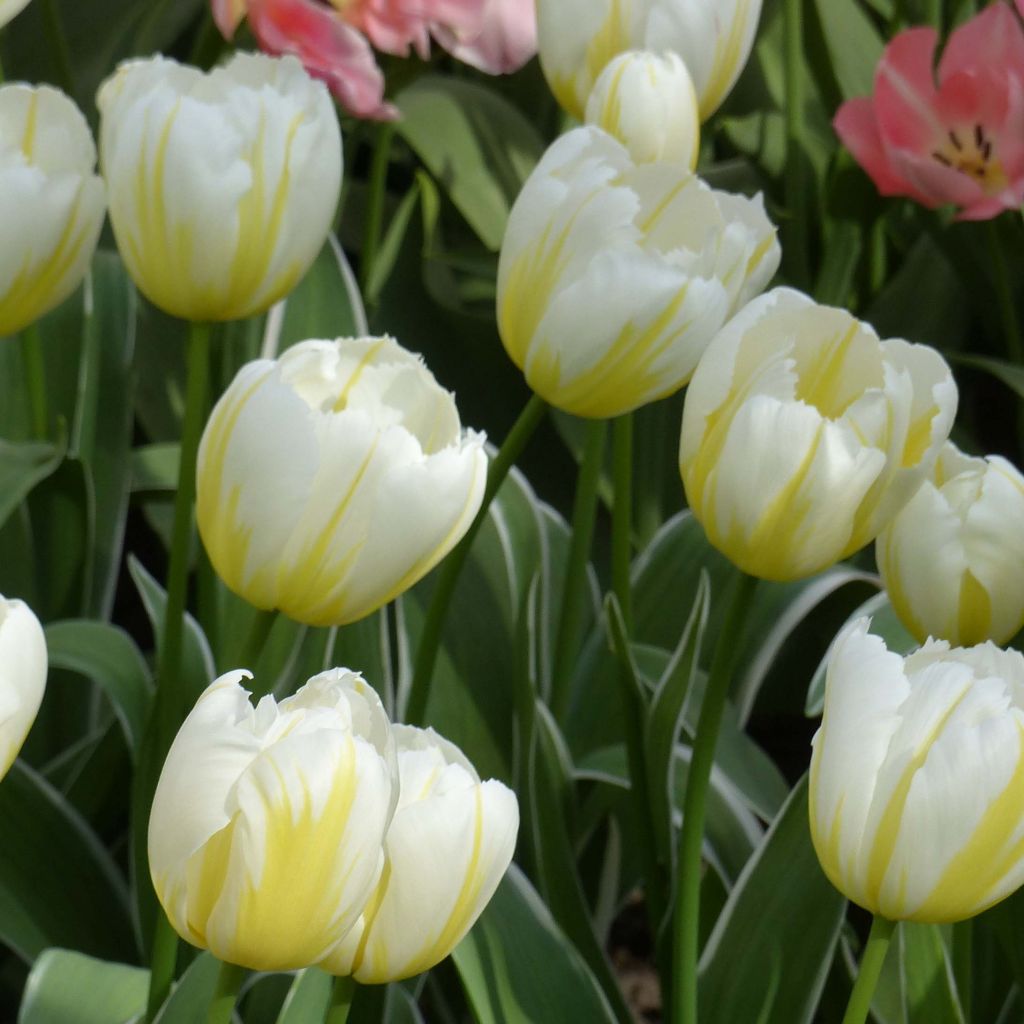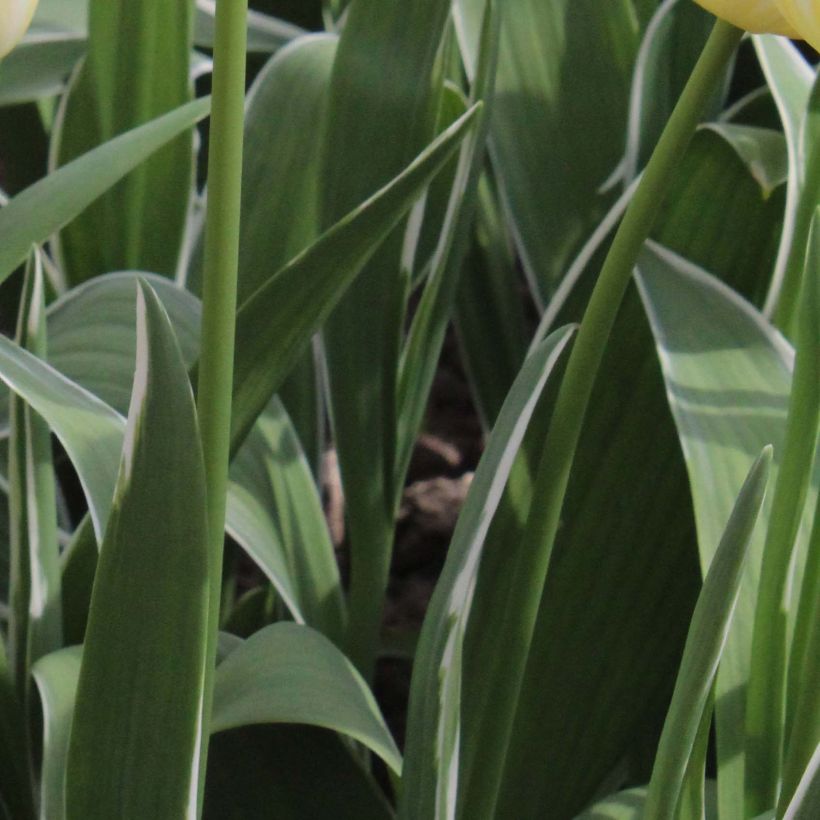

Tulipa Happy People - Triumph Tulip


Tulipa Happy People - Triumph Tulip


Tulipa Happy People - Triumph Tulip


Tulipa Happy People - Triumph Tulip


Tulipa Happy People - Triumph Tulip


Tulipa Happy People - Triumph Tulip
Tulipa Happy People - Triumph Tulip
Tulipa Triumph Happy People
Triumph Tulip
Conforming, but... not great, too artificial and not solid enough.
Grabotte, 09/09/2019
Special offer!
Receive a €20 voucher for any order over €90 (excluding delivery costs, credit notes, and plastic-free options)!
1- Add your favorite plants to your cart.
2- Once you have reached €90, confirm your order (you can even choose the delivery date!).
3- As soon as your order is shipped, you will receive an email containing your voucher code, valid for 3 months (90 days).
Your voucher is unique and can only be used once, for any order with a minimum value of €20, excluding delivery costs.
Can be combined with other current offers, non-divisible and non-refundable.
This plant carries a 6 months recovery warranty
More information
We guarantee the quality of our plants for a full growing cycle, and will replace at our expense any plant that fails to recover under normal climatic and planting conditions.

Would this plant suit my garden?
Set up your Plantfit profile →
Description
The Tulip Triumph 'Happy People' is a tender and cheerful flower, a valuable variety for the garden, yet rarely offered for sale. In a vase or in flowerbeds and flower pots, its pale yellow cup-shaped flower streaked with white, emerging from green foliage bordered with white, illuminates spring flowerbeds with a soft light. This unusual tulip, different each time, stands on a sturdy stem and blooms for several weeks. It flowers for a long time, in the middle of the tulip season, in the heart of spring, depending on the climate.
The 'Happy People' Tulip belongs to the Lily family. Of horticultural origin, introduced in 2009 in the Netherlands, it is currently classified in the 'Triumph' group, whose main characteristic is to have narrow cup-shaped flowers. Perched on tall stems of 45cm (18in) well above the broadly lanceolate and curiously marginate white leaves, the flowers have an unusual but nevertheless elegant colour, varying from lemon to pale yellow, creamy, with white and pearly flames, forming a well-organised corolla of six "petals" (more precisely tepals). The small white flames are visible even when it is in bud, and they are slightly scented, carried by very sturdy stems, unaffected by bad weather. The flowering takes place in April, in the heart of the tulip season.
The 'Happy People' triumph tulip, as beautiful in flowers as in leaves, finds its place in large flowerbeds, but also and especially in bouquets. Its elegance allows for combinations with solid or streaked tulips in white or red tones, creating a nice contrast. It also maximises the flowering duration of beds. Combine it with daffodils, jonquils, hyacinths, late hellebores and euphorbias, and you will obtain surprising scenes. It can also be planted in borders, rockeries, flower beds, as well as in flower pots and planters. This tulip enhances balconies and terraces very well. It pairs perfectly with tall perennials, and is ideal for creating elegant bouquets. In a vase, use very little water! Moreover, if your tulips open too quickly, you can add two to three ice cubes to the vase every day.
Report an error about the product description
Tulipa Happy People - Triumph Tulip in pictures






Plant habit
Flowering
Foliage
Botanical data
Tulipa
Triumph
Happy People
Liliaceae
Triumph Tulip
Cultivar or hybrid
Planting and care
Plant the bulbs in autumn, from September to December, at a depth of 15 cm (6in), spacing them 10 cm (4in) apart. The planting should be done in ordinary soil, slightly acidic, neutral, or slightly alkaline, loose, well-worked, and well-draining. Never add uncomposted manure or compost to the planting soil, as this could cause the bulbs to rot. The 'Happy People' tulip will grow well in moist to dry soil in summer. Plant it in a sunny or partially shaded location. Once flowering is finished, it is preferable to remove the fruits to avoid exhausting the plant.
Planting period
Intended location
Care
-
, onOrder confirmed
Reply from on Promesse de fleurs
Haven't found what you were looking for?
Hardiness is the lowest winter temperature a plant can endure without suffering serious damage or even dying. However, hardiness is affected by location (a sheltered area, such as a patio), protection (winter cover) and soil type (hardiness is improved by well-drained soil).

Photo Sharing Terms & Conditions
In order to encourage gardeners to interact and share their experiences, Promesse de fleurs offers various media enabling content to be uploaded onto its Site - in particular via the ‘Photo sharing’ module.
The User agrees to refrain from:
- Posting any content that is illegal, prejudicial, insulting, racist, inciteful to hatred, revisionist, contrary to public decency, that infringes on privacy or on the privacy rights of third parties, in particular the publicity rights of persons and goods, intellectual property rights, or the right to privacy.
- Submitting content on behalf of a third party;
- Impersonate the identity of a third party and/or publish any personal information about a third party;
In general, the User undertakes to refrain from any unethical behaviour.
All Content (in particular text, comments, files, images, photos, videos, creative works, etc.), which may be subject to property or intellectual property rights, image or other private rights, shall remain the property of the User, subject to the limited rights granted by the terms of the licence granted by Promesse de fleurs as stated below. Users are at liberty to publish or not to publish such Content on the Site, notably via the ‘Photo Sharing’ facility, and accept that this Content shall be made public and freely accessible, notably on the Internet.
Users further acknowledge, undertake to have ,and guarantee that they hold all necessary rights and permissions to publish such material on the Site, in particular with regard to the legislation in force pertaining to any privacy, property, intellectual property, image, or contractual rights, or rights of any other nature. By publishing such Content on the Site, Users acknowledge accepting full liability as publishers of the Content within the meaning of the law, and grant Promesse de fleurs, free of charge, an inclusive, worldwide licence for the said Content for the entire duration of its publication, including all reproduction, representation, up/downloading, displaying, performing, transmission, and storage rights.
Users also grant permission for their name to be linked to the Content and accept that this link may not always be made available.
By engaging in posting material, Users consent to their Content becoming automatically accessible on the Internet, in particular on other sites and/or blogs and/or web pages of the Promesse de fleurs site, including in particular social pages and the Promesse de fleurs catalogue.
Users may secure the removal of entrusted content free of charge by issuing a simple request via our contact form.
The flowering period indicated on our website applies to countries and regions located in USDA zone 8 (France, the United Kingdom, Ireland, the Netherlands, etc.)
It will vary according to where you live:
- In zones 9 to 10 (Italy, Spain, Greece, etc.), flowering will occur about 2 to 4 weeks earlier.
- In zones 6 to 7 (Germany, Poland, Slovenia, and lower mountainous regions), flowering will be delayed by 2 to 3 weeks.
- In zone 5 (Central Europe, Scandinavia), blooming will be delayed by 3 to 5 weeks.
In temperate climates, pruning of spring-flowering shrubs (forsythia, spireas, etc.) should be done just after flowering.
Pruning of summer-flowering shrubs (Indian Lilac, Perovskia, etc.) can be done in winter or spring.
In cold regions as well as with frost-sensitive plants, avoid pruning too early when severe frosts may still occur.
The planting period indicated on our website applies to countries and regions located in USDA zone 8 (France, United Kingdom, Ireland, Netherlands).
It will vary according to where you live:
- In Mediterranean zones (Marseille, Madrid, Milan, etc.), autumn and winter are the best planting periods.
- In continental zones (Strasbourg, Munich, Vienna, etc.), delay planting by 2 to 3 weeks in spring and bring it forward by 2 to 4 weeks in autumn.
- In mountainous regions (the Alps, Pyrenees, Carpathians, etc.), it is best to plant in late spring (May-June) or late summer (August-September).
The harvesting period indicated on our website applies to countries and regions in USDA zone 8 (France, England, Ireland, the Netherlands).
In colder areas (Scandinavia, Poland, Austria...) fruit and vegetable harvests are likely to be delayed by 3-4 weeks.
In warmer areas (Italy, Spain, Greece, etc.), harvesting will probably take place earlier, depending on weather conditions.
The sowing periods indicated on our website apply to countries and regions within USDA Zone 8 (France, UK, Ireland, Netherlands).
In colder areas (Scandinavia, Poland, Austria...), delay any outdoor sowing by 3-4 weeks, or sow under glass.
In warmer climes (Italy, Spain, Greece, etc.), bring outdoor sowing forward by a few weeks.
































